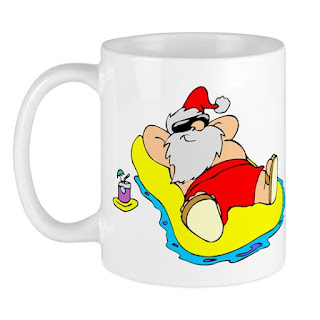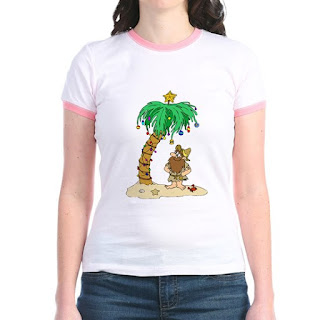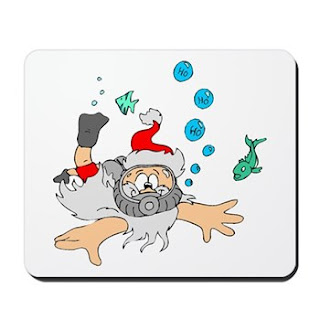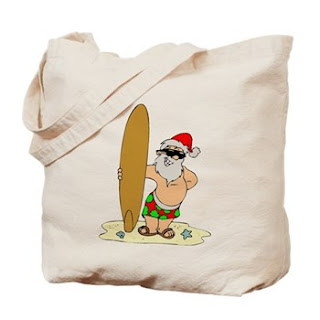 |
| Dancers from Teno Alto perform a ribbon dance. |
First published in 2007, with fiestas finally making a comeback after two years without, due to the pandemic, it seemed an ideal time to revive this and give a new audience an insider's view of these delightful events. Being traditional in nature, it's doubtful there'll be much change in the intervening fifteen years and, most towns and villages have similar fiestas, with a similar program.
After a mass for the emigrants - they mean, of course, the locals who emigrated, mostly to Venezuela - and almost everyone in the valley has family there, or has spent some time there themselves - this afternoon was dedicated to the Old Folks Festival, with participation from several folk groups and with a free afternoon tea laid on for all the OAPs who attended. For some reason, I resisted eating.
The mass for the emigrants was highly appropriate and, from a cultural standpoint, the events were some of the most fascinating on the fiesta's agenda. Being one of the least developed areas of Tenerife is synonymous with being one of the poorest financially, thus, the percentage of people who have, both in history and living memory, emigrated, mostly to Venezuela, from these valleys is particularly high. There are strong links between Tenerife and Venezuela anyway, through emigration and numerous returnees who brought back customs, a taste for arepas, cachapas and hallacas and, even Venezuelan born kids, but we tend to think of the more recent waves of emigration to escape poverty and repression in the 20th Century and, their return since democracy was restored.
The mass for the emigrants was highly appropriate and, from a cultural standpoint, the events were some of the most fascinating on the fiesta's agenda. Being one of the least developed areas of Tenerife is synonymous with being one of the poorest financially, thus, the percentage of people who have, both in history and living memory, emigrated, mostly to Venezuela, from these valleys is particularly high. There are strong links between Tenerife and Venezuela anyway, through emigration and numerous returnees who brought back customs, a taste for arepas, cachapas and hallacas and, even Venezuelan born kids, but we tend to think of the more recent waves of emigration to escape poverty and repression in the 20th Century and, their return since democracy was restored.
When we think of musical styles that the Canary Islands share in common with Latin America, the ones that come to mind most readily are Salsa, Merengue and, more recently Reggaeton, all of which have made their way east across the Atlantic ocean, but the cultural and musical links go back much farther.
In 1536, Pedro Fernández de Lugo, son of Tenerife's conqueror and first Adelantado (Governor), embarked on his expedition to Santa Marta in Colombia with 1,500 soldiers, half of whom were Canarians. Santo Domingo, Puerto Rico, Cuba, Mexico, Argentina, Uruguay, Florida, Louisiana, San Antonio (Texas) and, above all Venezuela (where Canarians, at times, made up 52% of the white immigrants into the country), were all also either founded or colonized by Canarians. Either voluntarily or by force, it's calculated that 10,000 Canary Island residents emigrated to the Americas in the first century after the conquest alone. In later centuries, these numbers were considerably greater still.
In 1536, Pedro Fernández de Lugo, son of Tenerife's conqueror and first Adelantado (Governor), embarked on his expedition to Santa Marta in Colombia with 1,500 soldiers, half of whom were Canarians. Santo Domingo, Puerto Rico, Cuba, Mexico, Argentina, Uruguay, Florida, Louisiana, San Antonio (Texas) and, above all Venezuela (where Canarians, at times, made up 52% of the white immigrants into the country), were all also either founded or colonized by Canarians. Either voluntarily or by force, it's calculated that 10,000 Canary Island residents emigrated to the Americas in the first century after the conquest alone. In later centuries, these numbers were considerably greater still.
Meanwhile, the fiestas and traditional dances in El Palmar and Teno Alto, we are told, have been passed down through the generations. One group from Teno Alto, danced the danza de las cintas (ribbon dance) that is reminiscent of Maypole dances and treated us to performances of various others of the most noted local folk dances Tajaraste de Teno, Polka de Teno and Joropo de Teno.
Joropo is a word that I'm familiar with, because one of the regular dance troupes at Tenerife's main carnival in Santa Cruz is called the Joroperos. Male dancers of the Joropo wear what is called liquiliqui: an outfit, traditional to the plains of Columbia and Venezuela and, again, one of the groups to perform regularly in Santa Cruz' Carnaval, Los Liqui-Liquis, takes this word as their name. They come from Venezuela, but in representation of the Hogar Canario (kinda Canarians abroad club) there. The Joropo - a musical style resembling the waltz, and accompanying dance, having African and European influences - is considered an unofficial national anthem in Venezuela and is said to have originated in the 1600s, in Columbia and Venezuela, but the roots of joropo include music from sailors and troubadours who came in galleons from Spain.
Joropo is a word that I'm familiar with, because one of the regular dance troupes at Tenerife's main carnival in Santa Cruz is called the Joroperos. Male dancers of the Joropo wear what is called liquiliqui: an outfit, traditional to the plains of Columbia and Venezuela and, again, one of the groups to perform regularly in Santa Cruz' Carnaval, Los Liqui-Liquis, takes this word as their name. They come from Venezuela, but in representation of the Hogar Canario (kinda Canarians abroad club) there. The Joropo - a musical style resembling the waltz, and accompanying dance, having African and European influences - is considered an unofficial national anthem in Venezuela and is said to have originated in the 1600s, in Columbia and Venezuela, but the roots of joropo include music from sailors and troubadours who came in galleons from Spain.
Back in the days of galleons, a stop in the Canary Islands for provisions, often also taking on additional passengers and crew, was mandatory, even if the ships did not originally depart from the archipelago. Some styles of folk music here contain elements of aboriginal customs, onto which Spanish ones have been tacked. This is certainly true of the tajaraste. When you consider that around 150 years had passed between the conquest of these islands and the appearance of the joropo in Latin America, it becomes less clear if this went straight from Spain to Venezuela, or whether it picked up elements from the islands first.
In the years between 1900 and 1910 alone, although 53,920 emigrants left the Canary Islands, some 61,931 returned from the Americas, so it starts to be unclear in which direction this crossed the Atlantic. but either way, at some point in history, a dance with the name of joropo reached the plains of Teno Alto; one of Tenerife's smallest and most inaccessible hamlets, where it's still danced.
Canarian folk music is a bit of an acquired taste for anyone not born among it, but for anyone with even a passing interest in the history of the islands - and their influence on the development of the New World - observing these traditions raises some interesting questions. Canarian folklore is a product of the temperament and psychology of the Canarian people, their aboriginal ancestry and rites, as well as marks left by the various different cultures that have invaded the islands. This has produced a style with a personality that is very particular to the islands. It's interesting to note that nowadays there are "purists" who would have everything done just so in relation to Canarian folklore, both the music and the dress. In truth, this view can be seen as entirely contrary to the nature of the beast, which has been in constant evolution for more than five centuries.
In the years between 1900 and 1910 alone, although 53,920 emigrants left the Canary Islands, some 61,931 returned from the Americas, so it starts to be unclear in which direction this crossed the Atlantic. but either way, at some point in history, a dance with the name of joropo reached the plains of Teno Alto; one of Tenerife's smallest and most inaccessible hamlets, where it's still danced.
Canarian folk music is a bit of an acquired taste for anyone not born among it, but for anyone with even a passing interest in the history of the islands - and their influence on the development of the New World - observing these traditions raises some interesting questions. Canarian folklore is a product of the temperament and psychology of the Canarian people, their aboriginal ancestry and rites, as well as marks left by the various different cultures that have invaded the islands. This has produced a style with a personality that is very particular to the islands. It's interesting to note that nowadays there are "purists" who would have everything done just so in relation to Canarian folklore, both the music and the dress. In truth, this view can be seen as entirely contrary to the nature of the beast, which has been in constant evolution for more than five centuries.
 |
| Members of the folk groups, in traditional costume, tuck into the sandwiches, rosquetes and wine. |
 |
| Dancers in typical Tenerife costume. |
 |
| Dancers from Teno Alto |





 After more than 20 years, posts here will now only be occasional (
After more than 20 years, posts here will now only be occasional (







